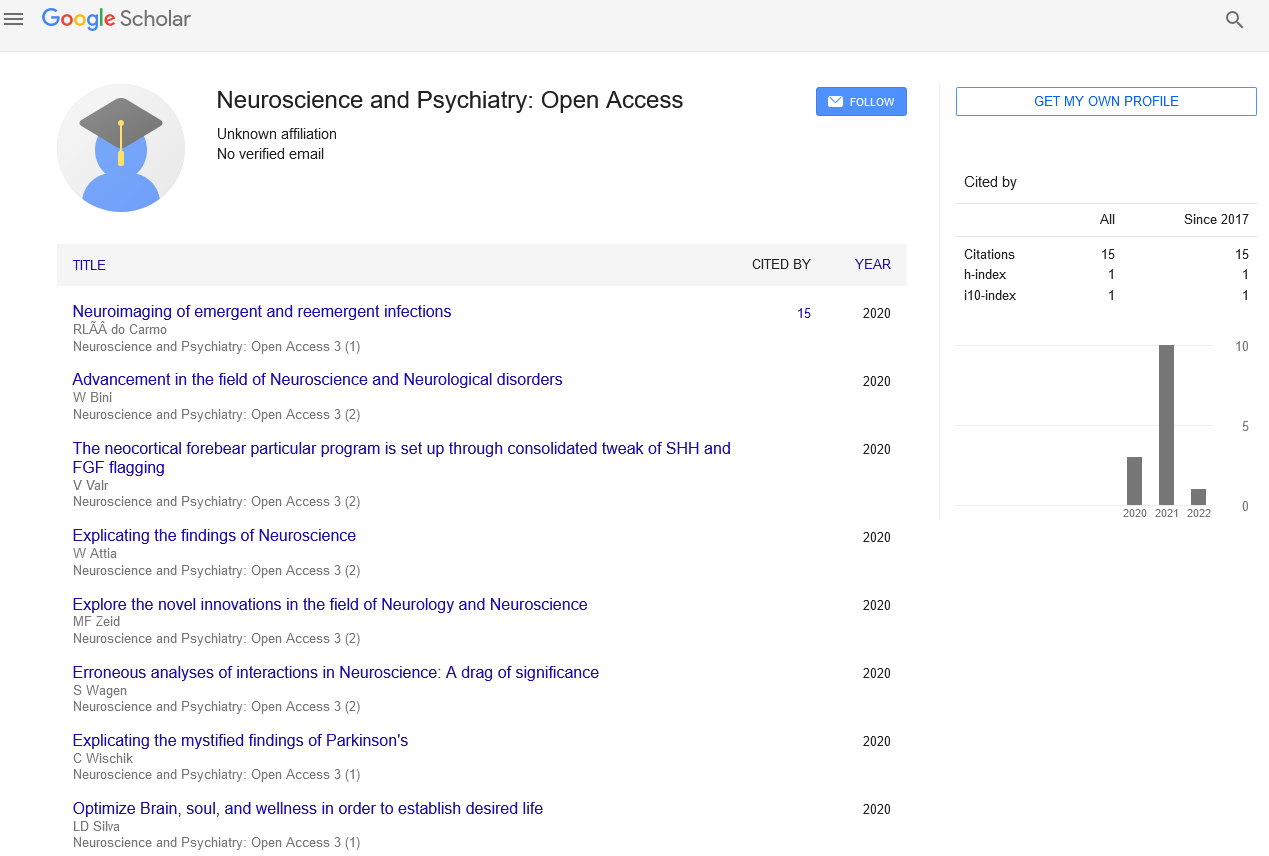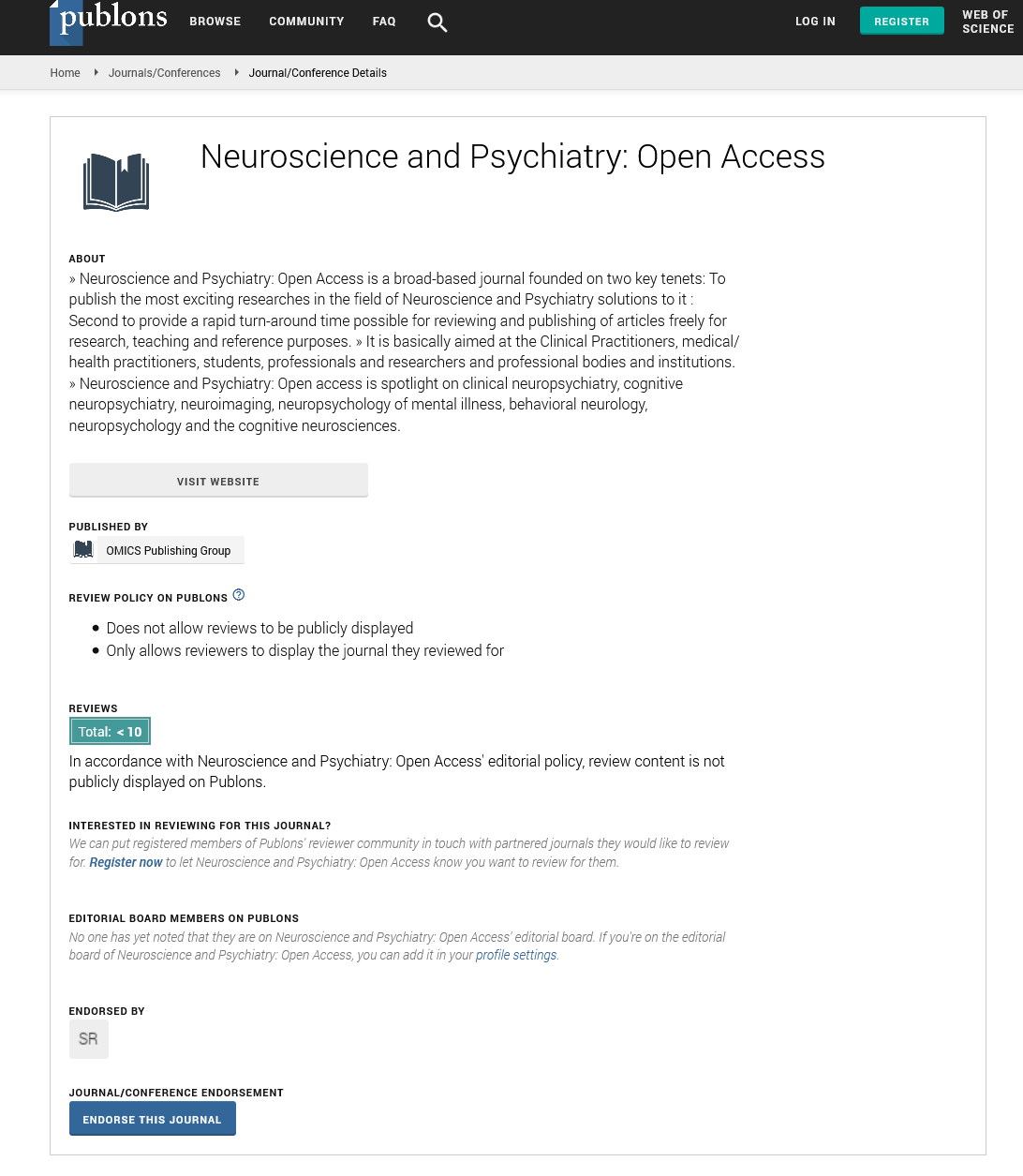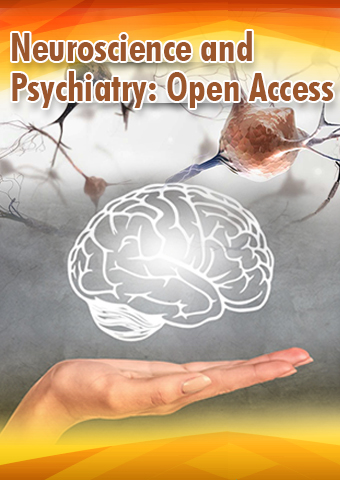Perspective - Neuroscience and Psychiatry: Open Access (2024) Volume 7, Issue 2
Unveiling the Patterns of Mental Health: Exploring Psychiatric Epidemiology
- Corresponding Author:
- Rama Krishna
Department of Psychiatry, National Institute of Mental Health and Neurosciences, Bangalore, India
E-mail: ramakrishna@gmail.com
Received: 09-02-2024, Manuscript No. NPOA-24-128847; Editor assigned: 13-02-2024, PreQC No. NPOA-24-128847 (PQ); Reviewed: 27-02-2024, QC No. NPOA-24-128847; Revised: 08-03-2024, Manuscript No. NPOA-24-128847 (R); Published: 15-03-2024, DOI: 10.47532/npoa.2024.7(2).199-201
Introduction
Psychiatric epidemiology is a field of study that investigates the distribution and determinants of mental disorders within populations. By examining the prevalence, incidence, risk factors, and outcomes of mental illness across diverse populations, psychiatric epidemiology sheds light on the burden of mental health disorders and informs public health policies and interventions. In this article, we delve into the foundations, methods, and findings of psychiatric epidemiology, highlighting its significance in understanding and addressing the global mental health crisis.
Description
Foundations of psychiatric epidemiology
Psychiatric epidemiology draws upon principles and methods from epidemiology, psychiatry, psychology, and public health to study the occurrence and distribution of mental disorders. Key foundational concepts include:
• Prevalence and incidence: Prevalence refers to the proportion of individuals in a population who have a particular mental disorder at a given point in time, while incidence refers to the rate of new cases of the disorder occurring within a specified time period. Psychiatric epidemiology examines both prevalence and incidence to assess the burden of mental illness and monitor changes over time. Prevalence studies provide insights into the magnitude of mental health disorders within populations, while incidence studies offer information on the risk of developing new cases of mental illness.
• Risk factors and protective factors: Psychiatric epidemiology investigates risk factors, or factors that increase the likelihood of developing a mental disorder, as well as protective factors, or factors that reduce the risk of mental illness or promote resilience. Risk factors may include genetic predisposition, early life experiences, trauma, stress, socioeconomic status, substance use, and social determinants of health. Protective factors may include social support, coping skills, access to healthcare, and healthy lifestyle behaviors. Understanding the interplay between risk and protective factors informs prevention efforts and targeted interventions to reduce the burden of mental illness.
• Diagnostic classification systems: Psychiatric epidemiology relies on standardized diagnostic classification systems, such as the Diagnostic and Statistical Manual of mental disorders (DSM) and the International Classification of Diseases (ICD), to define and categorize mental disorders. These classification systems provide criteria for diagnosing specific mental disorders based on symptoms, duration, and impairment in functioning. Psychiatric epidemiologists use diagnostic criteria to establish case definitions, conduct diagnostic interviews, and assess the prevalence and distribution of mental disorders within populations.
• Methodological approaches: Psychiatric epidemiology employs a range of research methods and study designs to investigate mental health disorders. Cross-sectional studies assess the prevalence of mental disorders at a single point in time, providing snapshots of mental health within populations. Longitudinal studies follow individuals over time to track the development, course, and outcomes of mental illness, allowing for the identification of risk factors and trajectories of illness. Epidemiological surveys, cohort studies, case-control studies, and randomized controlled trials are among the methods used to gather data on mental health outcomes and associated factors.
Key findings in psychiatric epidemiology
Psychiatric epidemiology has yielded valuable insights into the distribution, determinants, and consequences of mental health disorders. Key findings include:
• Global burden of mental illness: Psychiatric epidemiology has documented the substantial burden of mental illness worldwide, with estimates indicating that mental disorders account for a significant proportion of the global disease burden. Depression, anxiety disorders, substance use disorders, and psychotic disorders are among the leading causes of Disability Adjusted Life Years (DALYs) worldwide. Mental health disorders are associated with impaired functioning, reduced quality of life, increased mortality risk, and substantial economic costs to individuals, families, and society.
• Disparities in mental health: Psychiatric epidemiology has highlighted disparities in the distribution of mental health disorders across population groups, including differences by age, gender, race/ethnicity, socioeconomic status, and geographic location. Certain populations, such as children, adolescents, older adults, LGBTQ+ individuals, refugees, and socioeconomically disadvantaged groups, may be disproportionately affected by mental illness and face barriers to accessing mental health services. Understanding and addressing disparities in mental health is essential for promoting health equity and social justice.
• Comorbidity and multimorbidity: Psychiatric epidemiology has documented the high rates of comorbidity, or co-occurrence, of mental health disorders within individuals. Many individuals with mental illness experience multiple psychiatric disorders simultaneously, as well as comorbid medical conditions, such as cardiovascular disease, diabetes, and chronic pain. Comorbidity and multimorbidity complicate diagnosis, treatment, and management of mental illness, leading to poorer outcomes and increased healthcare utilization. Integrated care models that address both mental and physical health needs are increasingly recognized as essential for improving outcomes and reducing healthcare costs.
• Trajectories of mental illness: Longitudinal studies in psychiatric epidemiology have elucidated the trajectories of mental illness over the life course, identifying patterns of onset, persistence, remission, and recurrence of psychiatric disorders. Early life risk factors, such as adverse childhood experiences, trauma, and genetic vulnerabilities, may increase the risk of developing mental illness later in life. Trajectories of mental illness may vary by age, gender, socioeconomic status, and other factors, highlighting the importance of targeted interventions and preventive strategies tailored to the needs of specific populations.
Implications for policy and practice
Psychiatric epidemiology has significant implications for public health policy, clinical practice, and community interventions aimed at promoting mental health and preventing mental illness. Key implications include:
• Prevention and early intervention: Psychiatric epidemiology informs prevention efforts and early intervention strategies targeting modifiable risk factors for mental illness. Primary prevention strategies aim to reduce the incidence of mental disorders by addressing risk factors such as poverty, social inequality, trauma, substance abuse, and adverse childhood experiences. Early intervention programs aim to identify and address mental health concerns in their early stages, before they escalate into more severe or chronic conditions, through screening, assessment, and access to timely and appropriate interventions.
• Treatment and services planning: Psychiatric epidemiology guides the planning, allocation, and delivery of mental health services and resources to meet the needs of diverse populations. Epidemiological data on the prevalence, distribution, and patterns of mental illness inform service planning, resource allocation, and workforce development efforts aimed at addressing gaps in mental health care access and delivery. Integrated care models that coordinate mental health services with primary care, social services, and community supports are essential for providing comprehensive, person centered care to individuals with mental illness.
• Health equity and social justice: Psychiatric epidemiology underscores the importance of addressing social determinants of mental health and advancing health equity and social justice. Policies and interventions aimed at reducing disparities in mental health outcomes should address systemic inequities related to poverty, racism, discrimination, stigma, access to care, and structural barriers to mental health services. Culturally competent, trauma-informed, and community based approaches to mental health promotion and intervention are essential for ensuring that all individuals have equitable access to mental health care and support.
• Research and innovation: Psychiatric epidemiology drives research and innovation in mental health science, informing the development of evidence-based interventions, treatments, and policies to improve mental health outcomes. Epidemiological research generates new knowledge on the etiology, prevention, and treatment of mental illness, shaping research priorities and funding initiatives in mental health science. Innovations in data collection, analysis, and dissemination, including big data analytics, digital health technologies, and population-based registries, hold promise for advancing our understanding of mental health disorders and informing targeted interventions and policies.
Conclusion
Psychiatric epidemiology plays a central role in understanding the distribution, determinants, and consequences of mental health disorders within populations. By examining the prevalence, incidence, risk factors, and trajectories of mental illness, psychiatric epidemiology provides valuable insights into the burden of mental illness and informs policies, interventions, and practices aimed at promoting mental health and preventing mental illness. As the field of psychiatric epidemiology continues to evolve, embracing advances in research methods, technology, and interdisciplinary collaboration, it holds promise for addressing the global mental health crisis and promoting the wellbeing of individuals, families, and communities worldwide. With a commitment to rigorous science, equity, and social justice, psychiatric epidemiology remains essential for advancing the field of mental health and improving the lives of those affected by mental illness.


